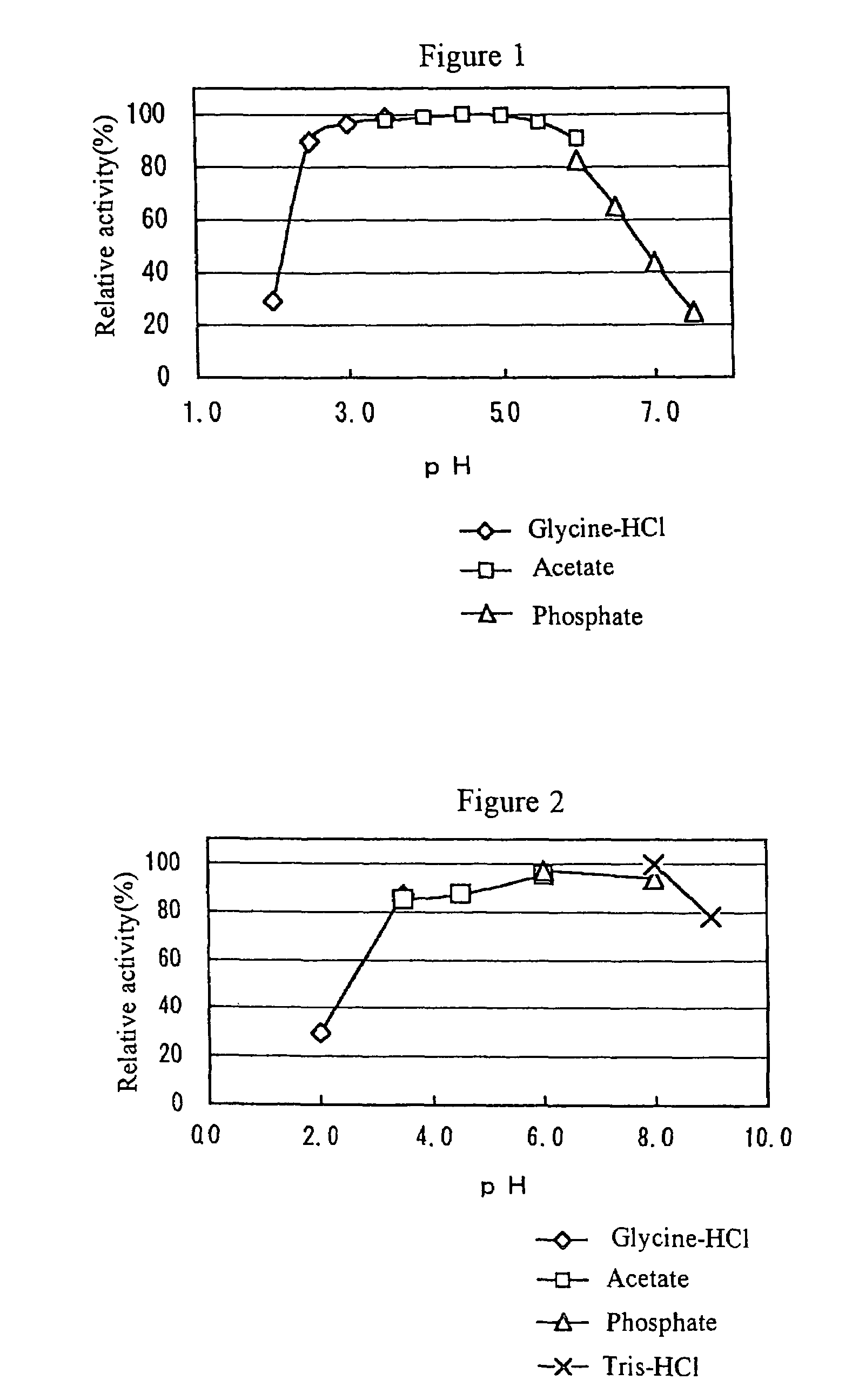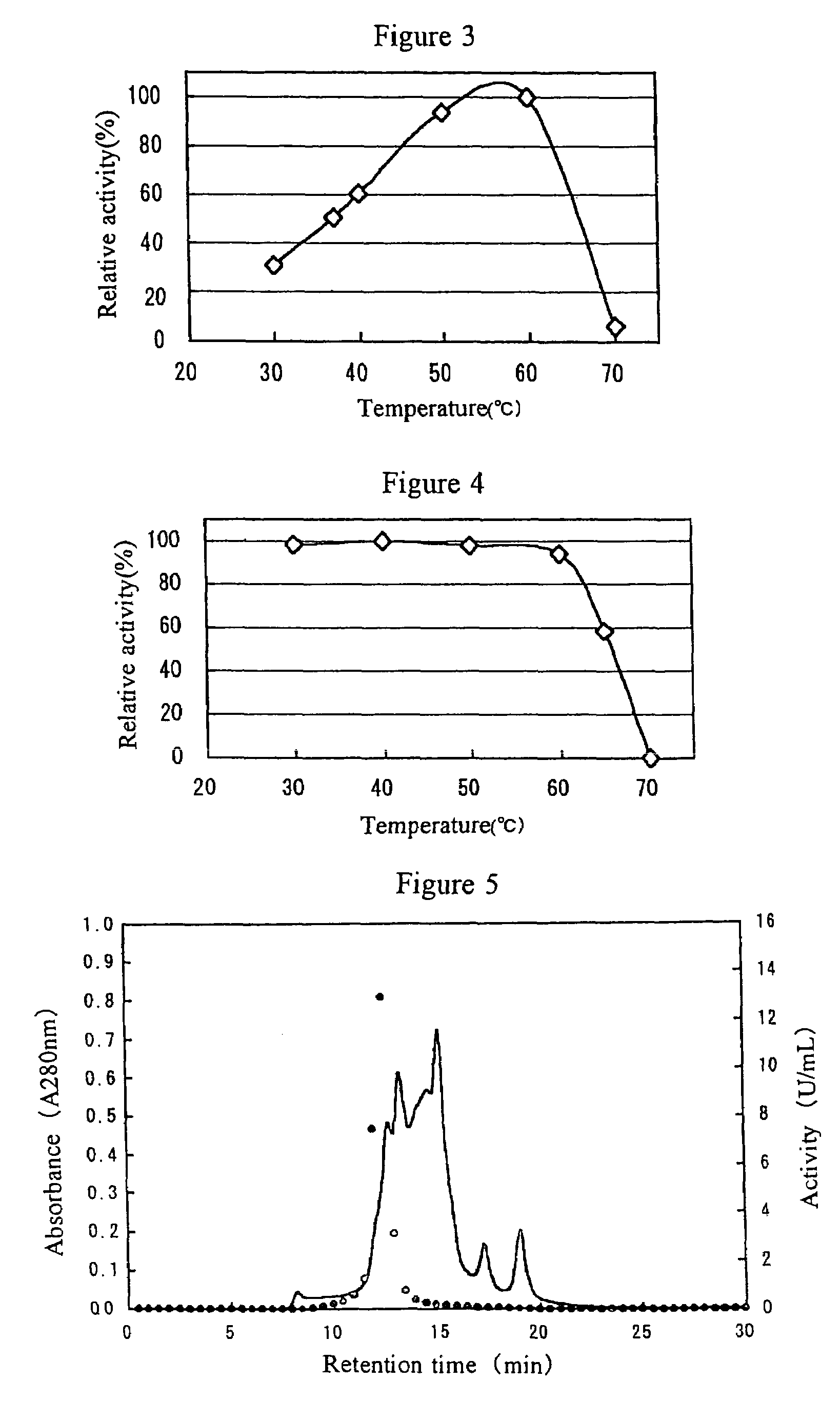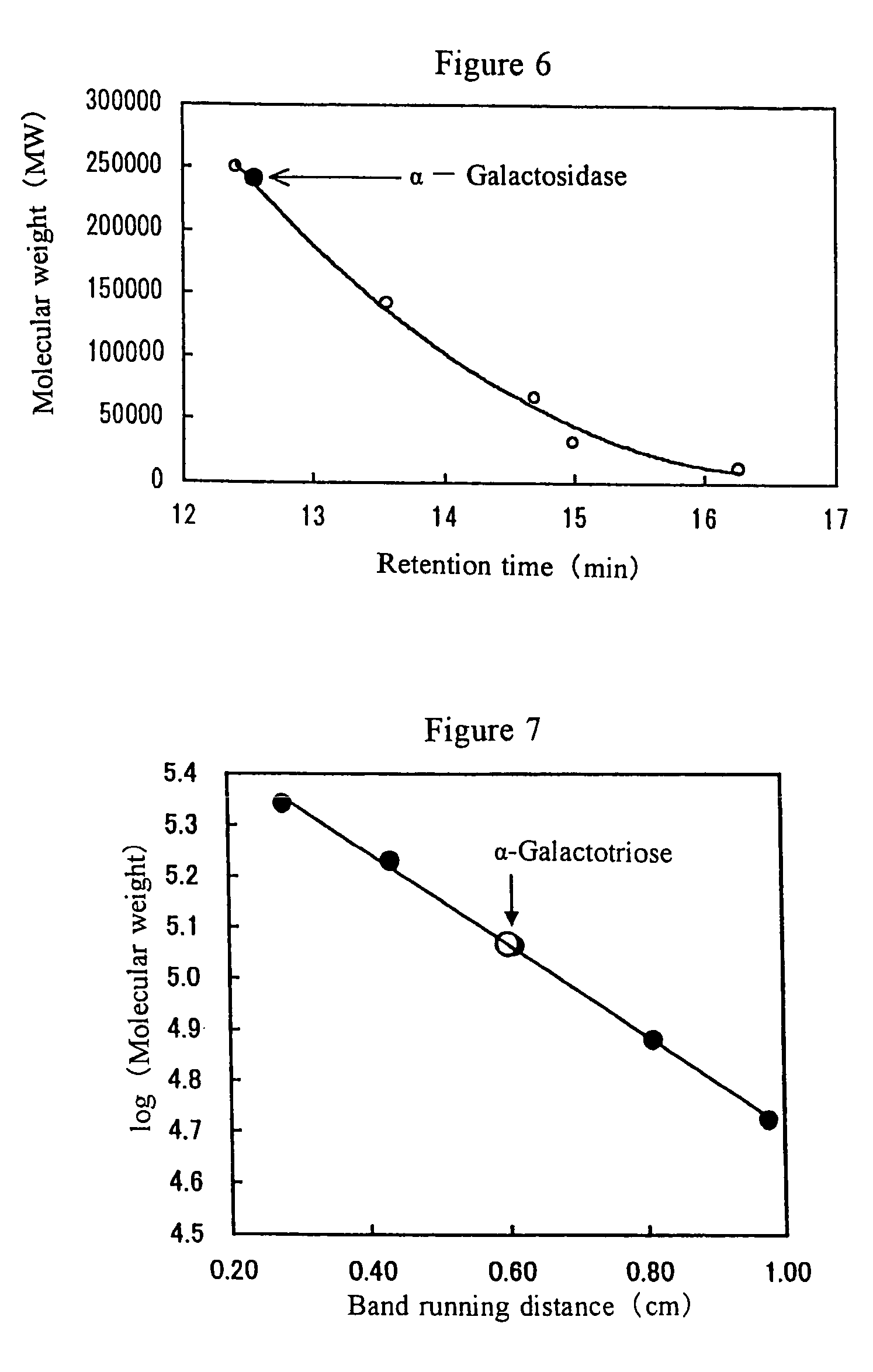Method of elevating yield of oligosaccharides containing alpha-galactosyl and anti-candida compositions
a technology of alpha-galactosyl and composition, applied in hydrolases, biochemistry apparatus and processes, enzymes, etc., can solve the problems of low yield of soybean oligosaccharides, insufficient supply of large quantities, and high current price of soybean oligosaccharides
- Summary
- Abstract
- Description
- Claims
- Application Information
AI Technical Summary
Benefits of technology
Problems solved by technology
Method used
Image
Examples
reference example 2
Measurement of Activity of α-galactosidase Using Melibiose as Substrate
[0101]0.2 ml of 10 mM melibiose and 0.2 ml of a predetermined 40 mM buffer (pH in accordance with the optimum pH of the enzyme) were combined with 0.05 ml of an α-galactosidase solution and reacted at 40° C. for 10 minutes. Then the mixture was heated at 100° C. for 10 minutes to terminate the reaction, and the resultant glucose level was quantified using an F-kit manufactured by ROCHE-DIAGNOSTICS (glucose / fructose) or a high pressure liquid chromatography (HPLC).
[0102]One enzyme activity unit (UM) was defined as the level of the enzyme capable of producing 1 micromole of glucose within 1 minute under the condition described above.
example 1
Preparation of α-galactosidase
[0103]90 ml of a liquid medium (pH6.0) containing 5% wheat bran was placed in a 500 ml Sakaguchi flask, sterilized by a standard method, inoculated with Aspergillus niger strain APC-9319 (FERM BP-7680) and pre-incubated (seed incubation) at 25° C. for 3 days. 500 g of the bran was combined with 400 ml of water, sterilized, inoculated with 10 ml of the pre-incubated culture, stirred thoroughly, and subjected to a main incubation at 25° C. for 4 days.
[0104]After incubation, the bran malt (koji) was pulverized, combined with 8 L of water to extract overnight at 4° C., filtered through a filter paper to obtain an extract filtrate. The resultant extract filtrate was examined for the α-galactosidase activity, which was revealed to be 3 U in 1 ml of the extract filtrate. 6 L of the extract filtrate was concentrated to 1 L using an ultrafiltration membrane (SIP manufactured by ASAHI KASEI), and combined with ammonium sulfate at a concentration giving a 70% satu...
example 2
Production1 of Oligosacchride Containing α-galactosyl
[0120]100 ml of a buffer solution, pH4.5, containing 60 g of a galactose (WAKO PURE CHEMICAL) and 2,100 UM of the α-galactosidase obtained in EXAMPLE 1 (galactose concentration: 60% (w / v), enzyme concentration 35 UM-galactose) was prepared, and allowed to react at 50° C. for 30 hours. The change with time during the reaction is shown in FIG. 9.
[0121]The reaction solution was loaded onto an activated charcoal column, from which the galactose was eluted with water and the oligosaccharide was eluted with the gradient of ethyl alcohol from 0 to 30%. The eluted oligosaccharide fraction was concentrated into dryness to obtain 24 g of an oligosacchride containing α-galactosyl. This oligosaccharide produced only galactose when hydrolyzed with an α-galactosidase or an acid.
[0122]This oligosacchride containing α-galactosyl was subjected to an HPLC analysis (FIG. 10) using a Shim-pack SCR-101 column (SHIMADZU) and revealed to consist of 11% ...
PUM
| Property | Measurement | Unit |
|---|---|---|
| pH | aaaaa | aaaaa |
| pH | aaaaa | aaaaa |
| temperature | aaaaa | aaaaa |
Abstract
Description
Claims
Application Information
 Login to View More
Login to View More - R&D
- Intellectual Property
- Life Sciences
- Materials
- Tech Scout
- Unparalleled Data Quality
- Higher Quality Content
- 60% Fewer Hallucinations
Browse by: Latest US Patents, China's latest patents, Technical Efficacy Thesaurus, Application Domain, Technology Topic, Popular Technical Reports.
© 2025 PatSnap. All rights reserved.Legal|Privacy policy|Modern Slavery Act Transparency Statement|Sitemap|About US| Contact US: help@patsnap.com



